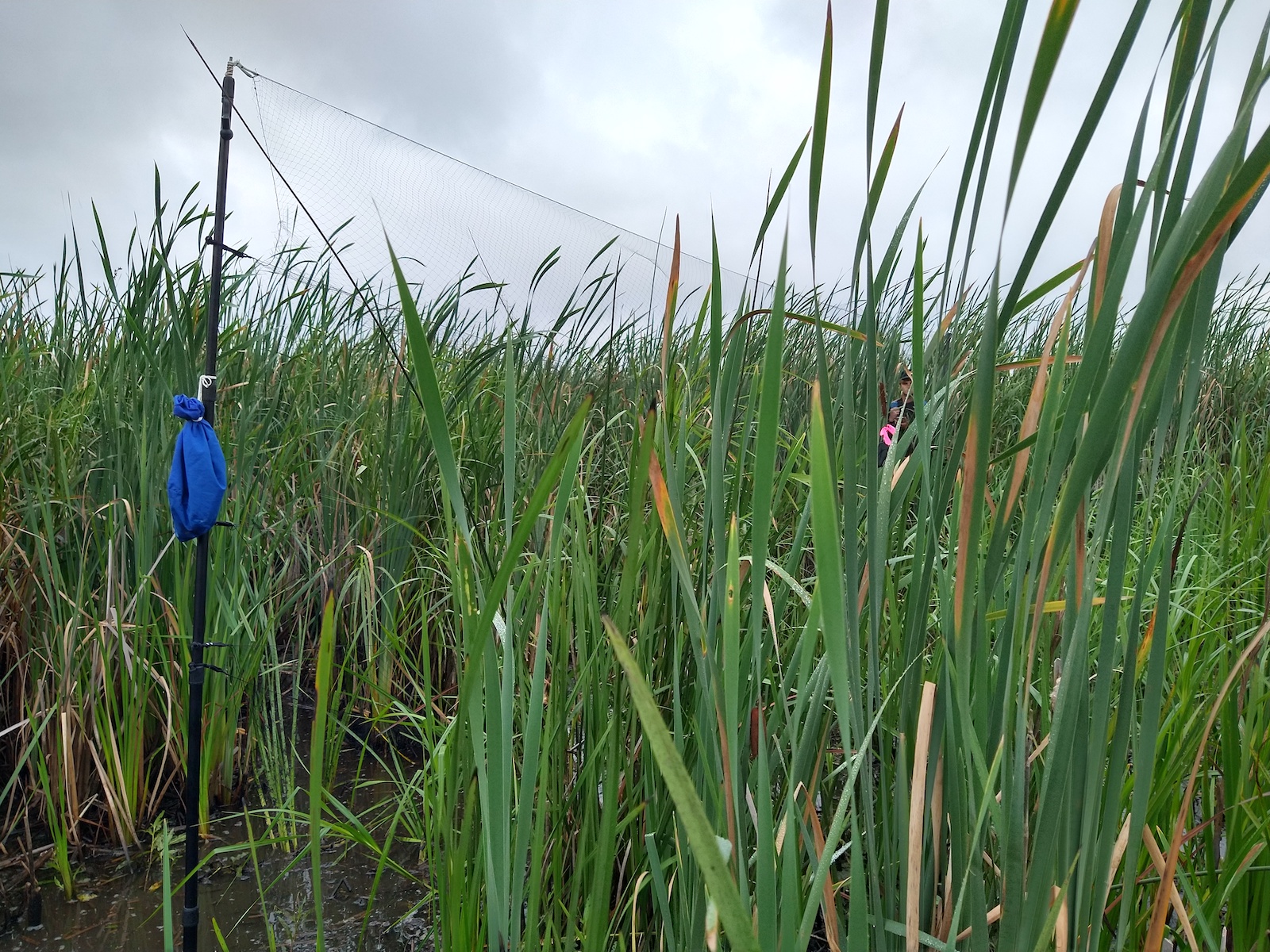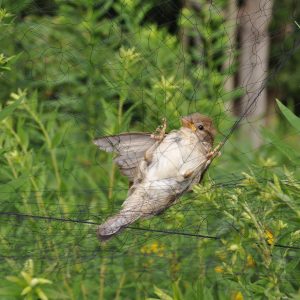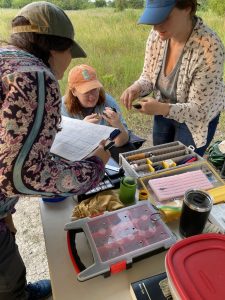UBAP manager Anastasia Rahlin is one of the collaborators at the Chicago Ornithological Society’s Big Marsh banding station. This collaborative effort with Audubon Great Lakes is in its third year of monitoring bird use at Big Marsh Park.
Big Marsh Park, located in the Lake Calumet region on the southeast side of Chicago, is actively managed by the Chicago Park District to restore and improve the wetlands and surrounding habitats.
This vital stopover habitat provides fuel and shelter for migrating birds, including many species in greatest conservation need. The banding station is part of the The Institute for Bird Populations MAPS (Monitoring Avian Productivity & Survivorship), a network of over 1200 stations across North America.
One method used to catch birds is mist nets – fine meshed nets stretched across an area. People often wonder how the nets catch birds without hurting them.
Each mesh panel is taller than the space between panels. This allows a loose pocket that the birds end up in when they fly into the net. This doesn’t mean that birds are always happy to be caught, but at least they aren’t harmed.
Once a bird is captured, a series of measurements are taken and a metal band is attached to the leg.
These bands are issued by the Bird Banding Lab at the USGS to certified Master Banders. Bands come in a range of sizes and it is important to choose the correct size for a particular bird.
Each band has a unique number and the BBL maintains a database with all of the information on the individual bird banded with each number. If someone catches or finds a banded bird, they report the band number to the BBL which adds to our knowledge of that bird.
In addition to the banding station, there is a large antenna that is part of the Motus project at the site to monitor radio tagged birds migrating through.
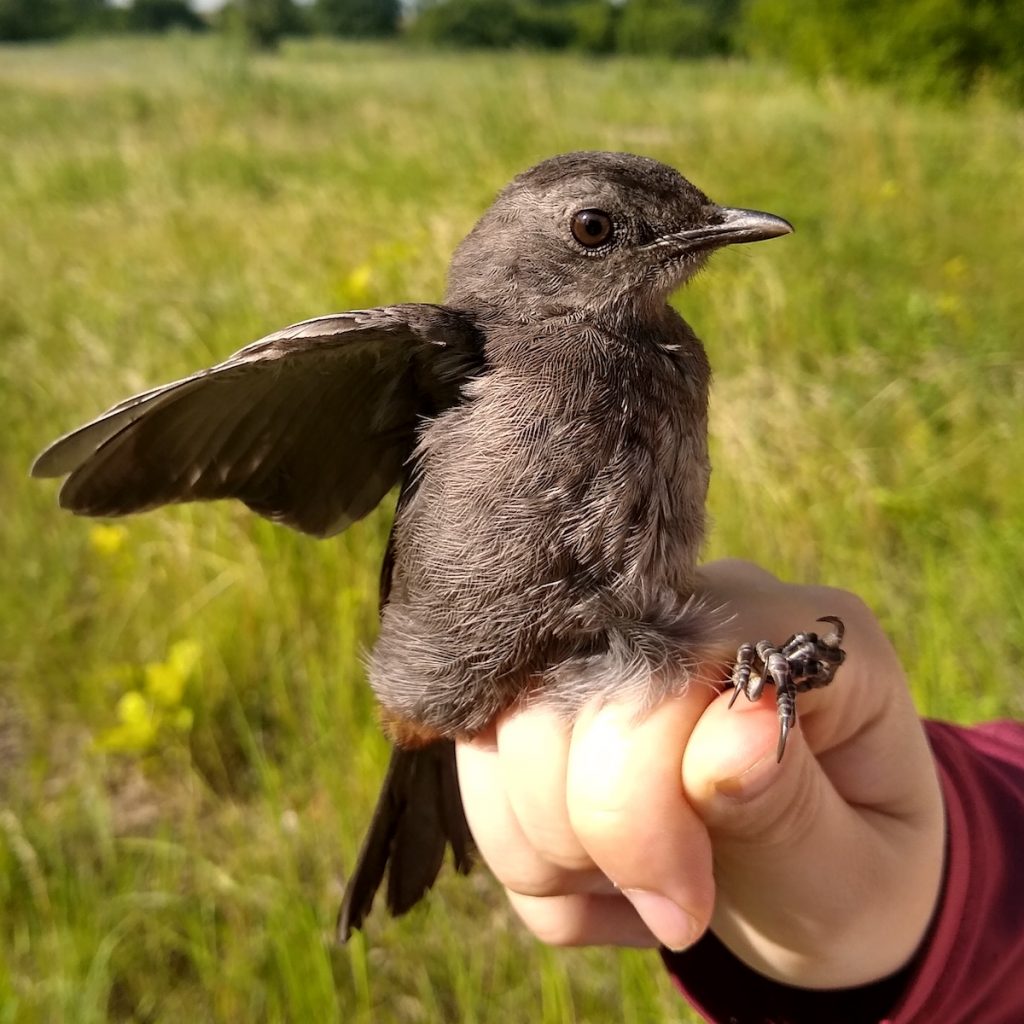
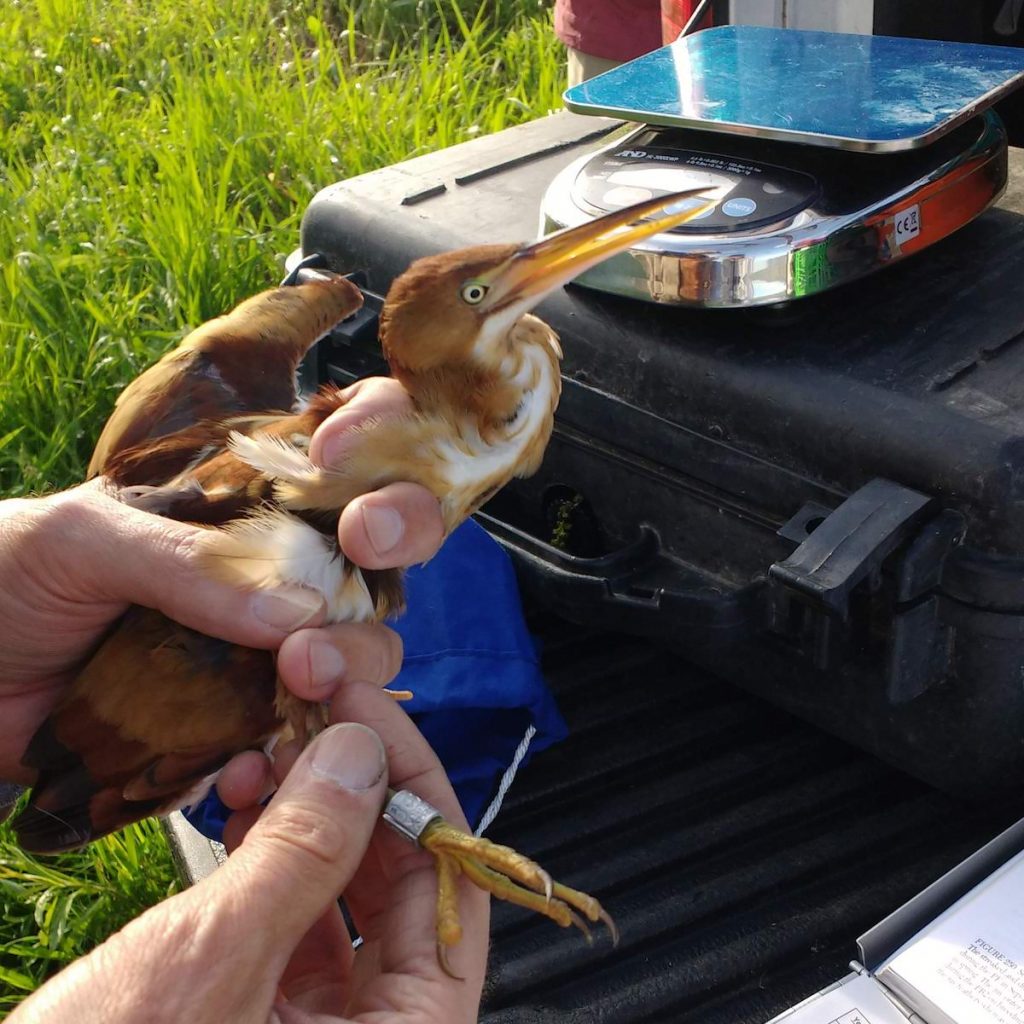
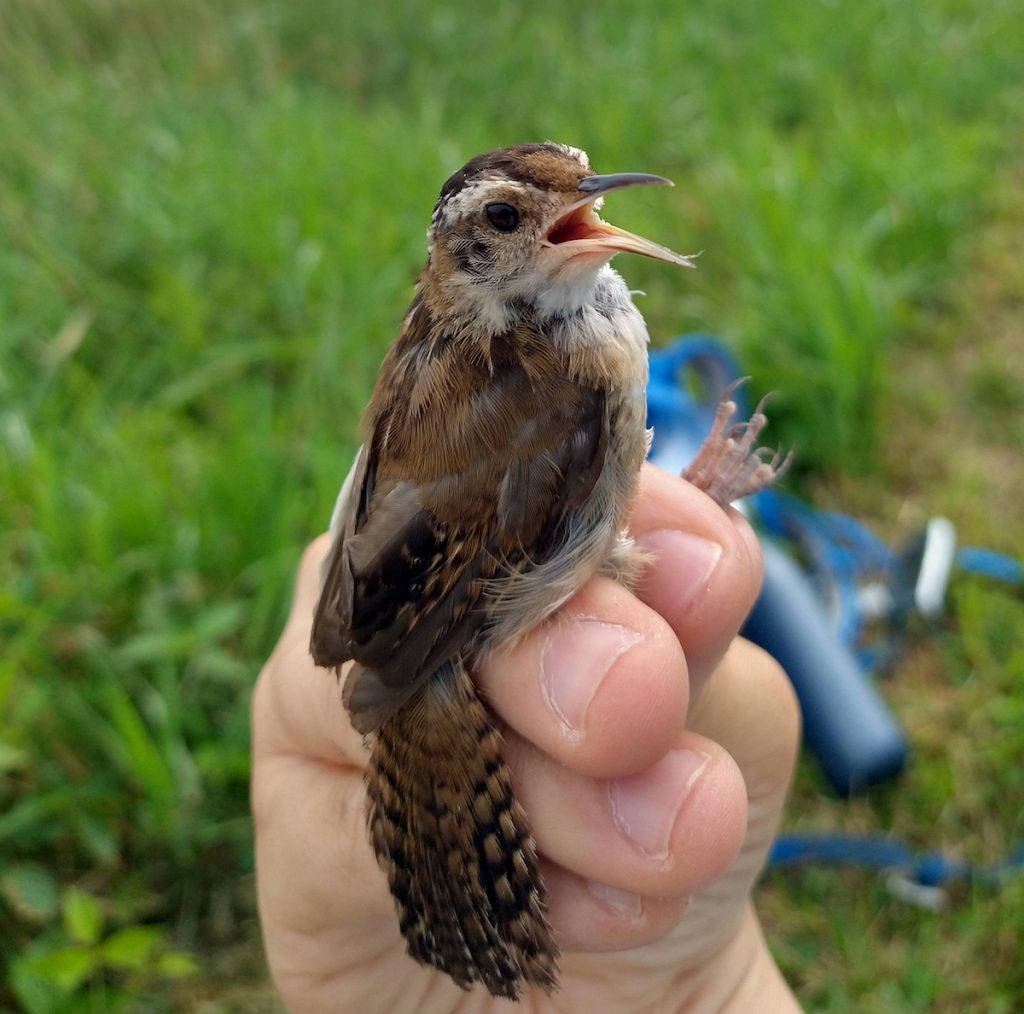
Learn about our other bird research
Learn more about the Bird Banding Lab

